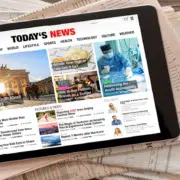Plan For The Unplanned In Healthcare
The COVID-19 pandemic has both underscored the importance of healthcare and challenged it in unexpected ways this year.
Many hospitals and health systems were full of COVID patients and struggling with procuring personal protective equipment (PPE) and ventilators necessary to treat these individuals. On the flip side, many communities reduced or shut down nonemergency medical care from surgeries to screenings to help reduce transmission risks.
That was springtime, and healthcare has rebounded since then, with a recent poll showing 68% of adults saying they would likely see their primary doctor amid the ongoing pandemic, up from 65% in July and 39% in April. The same poll shows people are still somewhat reluctant to seek out specialty services or visit emergency rooms and we’re dealing with a surge of coronavirus cases across the country.
So, here we are again, preparing for the unknown, bracing for several more months of uncertainty. If I had a crystal ball, I would be a very popular person right now.
Here are some things our healthcare marketing team at Chartwell Agency is keeping top of mind as we look ahead to 2021.
COVID-19 will be a reality – for a while.
This one shouldn’t be a surprise, and some direction on how this pandemic will be handled moving forward might become clearer after Election Day. But the reality is cases are on the rise in many states across the country, so COVID-19 still needs to be a factor in your marketing and communications.
Look back at the messaging you used in March, April, and May to revise and refine it. People are used to the constant changes related to the pandemic, so it’s important to keep updating your website and social channels – and maybe push out email to patients – with any changes to COVID-19 protocols. It’s also OK to remind them on social media about wearing masks, visitor restrictions, etc., especially with cases increasing.
My dad had a doctor’s appointment this week, and the night before, he was wondering if my mom would be able to join him or not based on the hospital’s visitor policy. I hopped on the clinic’s Facebook page and website to see if they’d posted any recent updates. Assume that’s what many – or most – people will do when researching healthcare and how happy they’ll be if they see pertinent updates on your digital platforms (or, in this case, how happy their children will be).
Also, the majority of today’s media coverage is still centered on COVID-19, so figure out ways your organization can still fit into that news cycle. Are you seeing delayed screenings or an uptick in surgeries? Do you have a cool partnership with another organization to manufacture some type of equipment or protective gear? Are there other trends your company can speak to?
Plan for the pandemic but do other things, too.
For many of our healthcare clients we started integrating more non-COVID content, shifting some of that balance by late spring and through summer and fall. You probably heard many people talking about COVID news fatigue and as services started back up again, it was important to get patients to return for important care.
You can still write about and post about awareness months and days, share team photos for the holidays, and promote important news about your providers, patients, and more. Your followers and communities still want to read (and need) that information. With COVID still in the forefront, pay special attention to safety (are people in photos wearing masks?) and don’t overdo it – maintain a good balance.
Keep emphasizing the importance of healthcare.
Four in 10 adults delayed healthcare this year because of COVID-related concerns, according to the Centers for Disease Control and Prevention. And groups like the Colorectal Cancer Alliance have shared that colon cancer screenings dropped 86% during the early days of the pandemic, which could mean thousands more deaths during the next decade because of those delayed tests.
The patient experience should always be a priority that evolves and improves with tools like data and technology. COVID-19 has underscored this experience even more, and you must keep communicating that it’s safe and important to seek care when people need it (or should get it, like a mammogram or colonoscopy).
Keep evaluating and investing in technology like telehealth to increase access while also offering safe appointment options for you and your patients.
This may seem like a lot of words that point to continued uncertainty, but if this year has taught us anything, it’s that we will manage uncertainty because we have to. We can’t emphasize enough how you can’t go dark during dark times and the importance of being transparent and authentic with your messaging.
If prioritizing some of these things has been or continues to be difficult to manage, we can help you come up with a plan that suits your healthcare organization.









